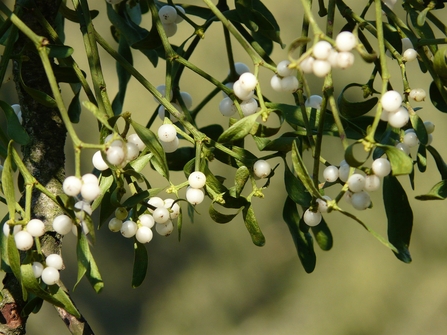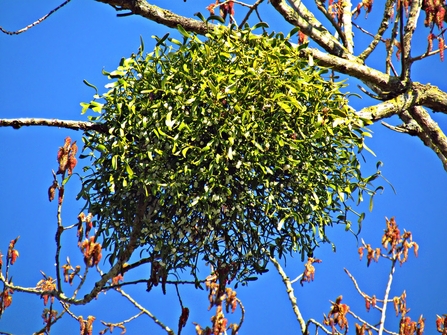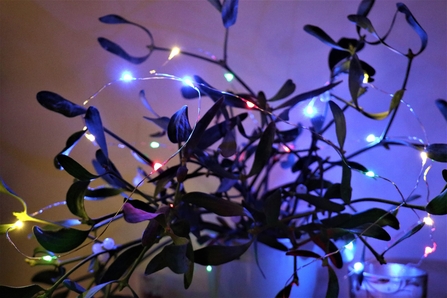Everyone knows mistletoe grows on trees. It’s particularly associated with apple trees in orchards and is a common sight high in poplar trees. It will also grow on hawthorn, lime and false acacia (Robinia) and very rarely, on oak. In continental Europe it is sometimes found on conifers.
Technically it’s a hemi-parasite, which means it will take nutrient from the host tree, but it can also photosynthesise its own food via its green leaves. The strict host and parasite definition is too simplistic. It is likely that mistletoe shares the food it produces with the tree. It makes sense for a parasite to keep its host alive as long as possible.




